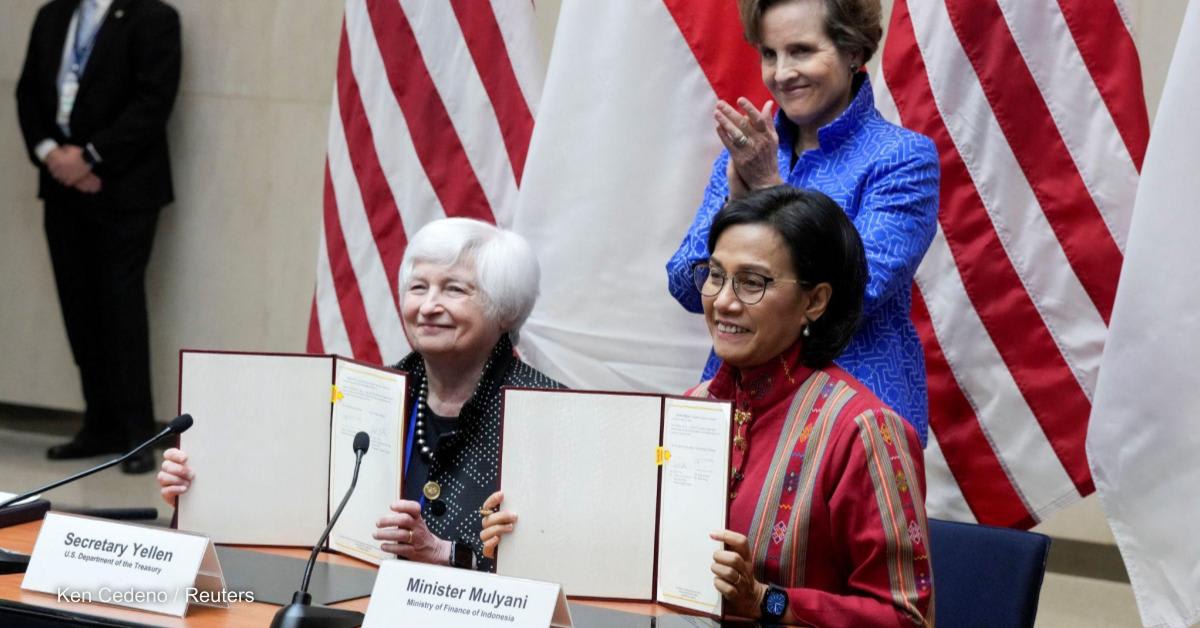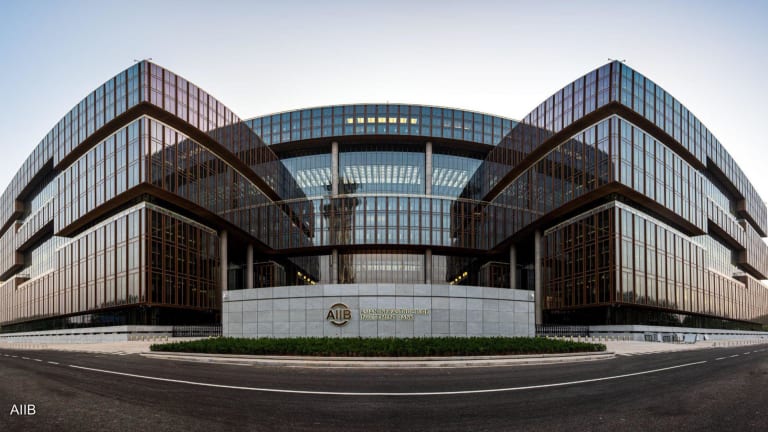Interactive: Exploring DFID's funding pipeline
Explore DFID's future opportunities in our quarterly analysis with interactive visualization.
Planning the procurement pipeline in good time is integral to organizations’ successes in winning awards and bidding for opportunities. Donors, such as USAID or Inter-American Development Bank, are aware of this and release early intelligence on future opportunities months or even years ahead. In most cases, it is recommended to follow relevant opportunities early-on in the procurement process to leave sufficient time for partnership mapping, proposal building, and keeping ahead of the competition with vital project updates. The U.K. Department for International Development is no exception, in 2018 it started releasing regular updates for its future pipeline. The most recent update encompasses 49 opportunities, worth in total around £1.2 billion ($1.5 billion) — most of which do not have pre-determined plans for funding allocations. Devex’s Analytics team aggregates this data regularly in our Funding Search and provides an easy overview of the upcoming opportunities in an interactive visualization and quarterly analytical summaries. Keep reading for that link. The scope of the pipeline and methodology DFID guarantees pipeline updates every quarter, but so far the exact time of posting varies and is not explicit. To date, five pipeline updates have been released: July 2018, October 2018, January 2019, June 2019, and October 2019 — with the next one predicted to be posted in late December 2019 or January 2020. The future pipeline is a basic document containing information on contract titles, descriptions, locations, and thematic areas. To make it easier to understand, some areas have been merged to limit the number of possible thematic areas and make the analysis more focused in cases. For example, where two thematic areas were very similar, “Economic” and “Economic Development,” or if one category, for instance, “Basic Nutrition” was a sub-area of a larger area i.e. “Health.” Contract values, as well as start and end years are approximate, according to DFID. In cases where a minimum and maximum value has been provided, Devex prioritized the maximum value in its analysis. Approach to market quarters are approximate time periods when the opportunity is likely to be released, which could be as early as the same quarter in which the pipeline was released to two years ahead. The release of the opportunities is also preceded by Early Market Engagements, or EMEs, organized by DFID offering an opportunity for interested parties to ask questions and connect with other participating organizations. The EMEs are regularly posted on Devex’s Funding platform, but can also be found on DFID’s website. Some opportunities are reposted from preceding quarterly updates, therefore in the event where two contract titles and descriptions are similar, rely on the most recently released information. Alternatively, duplicates can be avoided by filtering the results by one release date only — and the most recent one. Lastly, the list of potential partners is compiled based on project information on DFID’s project database, which matches the contract title and description in the future procurement pipeline update. In cases where partners are available, Devex explicitly states whether the information is based on an ongoing or past phase of the matching project. Therefore, any partners based on past phases are not necessarily the same implementing partners but form a good starting point for further research. Exploring DFID’s future pipeline with Devex Devex posts all future opportunities as soon as the procurement pipeline update is released by DFID. Explore our funding platform further and set up alerts, so that you never miss any relevant opportunities. On the platform, the updates are called operational documents and can be found under the category of Funding Activity. Filter the information by donor and geography and limit the number of results by publication date and type of report. Quarterly pipeline analysis The Analytics team at Devex summarizes below key insights from each pipeline update. These will be updated on a regular basis as soon as DFID releases new updates and the date headers refer to the time of their publication. For a professional tailor-made pipeline building or other strategic advisory services on DFID, please reach out to analysts@devex.com and start the conversation about how to scale your business today. July 2018 The very first pipeline update from DFID boasted 15 opportunities, worth around £3.5 billion. However, one of the advertised opportunities was for the International Multi-Disciplinary Programme Framework Agreement, worth £3 billion out of the total figure, which was already claimed by 81 contractors, and analyzed by Devex in a separate article. For methodological reasons, this opportunity has been removed from the interactive visualization. The remaining funds — £529.6 million — had all approach to market in Q3 2018 and were primarily either in Africa or had a global scope, with six opportunities each. The biggest sector was health, including a £200 million opportunity for the global project called Accelerating Sustainable Control and Elimination of Neglected Tropical Diseases Programme, or ASCEND. Based on the seven projects which had data on partners, sourced from past or ongoing projects in DFID’s projects database, the top implementing agencies were World Bank, Crown Agents Limited, and World Health Organization. October 2018 Discounting the framework contract from last quarter, this pipeline update had more than double the value — £1.1 billion. Out of the total of 23 opportunities, the biggest one was Humanitarian Response and Resilience in South Sudan, or HARISS II, worth £443 million. Beyond six projects that were global in scope, Tanzania had the highest number of projects, four, followed by Zimbabwe and Nepal, with two each. Though the vast majority of opportunities were bound to approach the market in Q4 2018, there were nine opportunities with approach to market throughout 2019. While the humanitarian focus was the largest in terms of total funding allocated — primarily due to the South Sudanese project — economic development and health were leading thematic areas looking at the number of opportunities. For a more detailed analysis, Devex has published a separate article covering the data in this quarter. January 2019 This quarterly update had an increased number of opportunities to 30, worth £828.8 million. Unlike previous updates where Africa was the dominating continent of implementation, this quarter had more opportunities in Asia. Pakistan had three contracts and Nepal and Bangladesh two contracts each, worth a total of £131.5 million, primarily targeting multiple areas of interest, including Security and Justice (IPSSJ II) and Pathways to Prosperity for Extremely Poor People (PPEPP). Education was overall the most prominent thematic area for this quarter, with six opportunities worth in total £212 million. The most valuable contract in this area was the well-known International Citizen Service, worth £100 million, which provides opportunities for British youth to volunteer in developing countries. The project has several implementers, with Voluntary Service Overseas being one of the leading organizations. The vast majority of the 30 opportunities had an approach to market in 2019, but three of them had it set for 2020. June 2019 Twenty-eight opportunities had approach to market in Q3 and Q4 of 2019, with 21 opportunities waiting to be released 2020-2022, this update covers around £1 billion in total funding. It is also an update with the highest ratio of global projects, whereby less than half of the contracts are bilateral or multilateral in nature. In Africa, across 11 countries, some of the biggest contracts include Cities & Infrastructure for Growth (CIG) in Uganda and Zambia, and Support to the Health System in the Democratic Republic of Congo — worth £75 million and £150 million respectively. The largest thematic area, both in terms of the number of contracts and total funding, was research and it was primarily global in scope. The country-specific research contracts included Accelerating Change in Tanzania and South Asia Country Research Fund (SACRF) in five South Asian countries. For a more detailed analysis, Devex published a separate article covering the data in this quarter. October 2019 Forty-nine opportunities and £1.2 billion, this pipeline update was likely the last to have opportunities with approach to market in 2019. The remaining 41 opportunities will be released between 2020-2022, whereof 17 are expected to approach the market in Q1 2020. Bangladesh is the leading location this time, with 11 contracts worth £208 million, including two major contracts in education Improving Quality of Education in Bangladesh and Educate the Most Disadvantaged Children, worth £43 and £40 million respectively. This quarter, access to finance has risen to be the top thematic area, both looking at the total funding and number of contracts. However, the biggest contract can be found in trade spanning over five African countries titled Supporting Indian Trade and Investment for Africa. It is worth £50 million and the previous phase was implemented by Oxford Policy Management and International Trade Center. The former was also one of the top implementing partners for this quarter’s opportunities, alongside the World Bank and U.N. agencies, such as UNICEF and UNFPA. For access to funding analysis, the latest funding updates, and opportunities from over 780 funding sources — in addition to exclusive Devex Pro news content — please get in touch to learn more about the Devex Business Intelligence Account membership. Janadale Coralde, data quality and knowledge management assistant, contributed with data collection and curation to this article.
Planning the procurement pipeline in good time is integral to organizations’ successes in winning awards and bidding for opportunities. Donors, such as USAID or Inter-American Development Bank, are aware of this and release early intelligence on future opportunities months or even years ahead.
In most cases, it is recommended to follow relevant opportunities early-on in the procurement process to leave sufficient time for partnership mapping, proposal building, and keeping ahead of the competition with vital project updates.
The U.K. Department for International Development is no exception, in 2018 it started releasing regular updates for its future pipeline. The most recent update encompasses 49 opportunities, worth in total around £1.2 billion ($1.5 billion) — most of which do not have pre-determined plans for funding allocations.
This story is forDevex Promembers
Unlock this story now with a 15-day free trial of Devex Pro.
With a Devex Pro subscription you'll get access to deeper analysis and exclusive insights from our reporters and analysts.
Start my free trialRequest a group subscription Printing articles to share with others is a breach of our terms and conditions and copyright policy. Please use the sharing options on the left side of the article. Devex Pro members may share up to 10 articles per month using the Pro share tool ( ).
Maja Wisenberger works in Devex's Analytics team in Manila, assisting in expanding data content and analyzing global funding trends. She has a master's degree in Public Policy from China and she brings experience from UNOPS, UN Women and the nonprofit sector. Her main areas of interest are poverty alleviation, economic and gender equality, and Chinese philanthropy.








